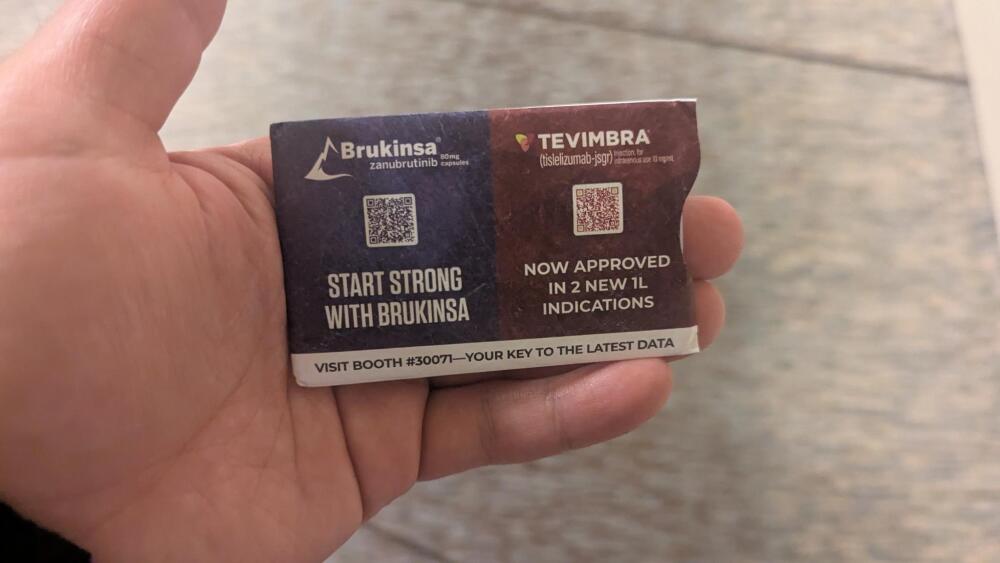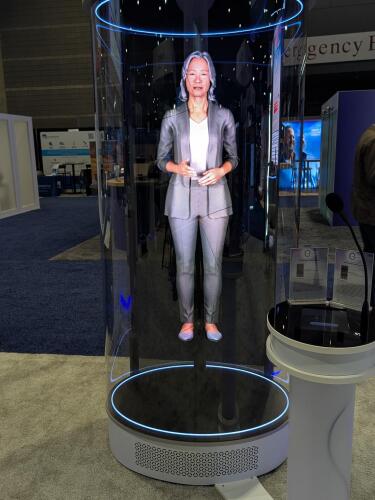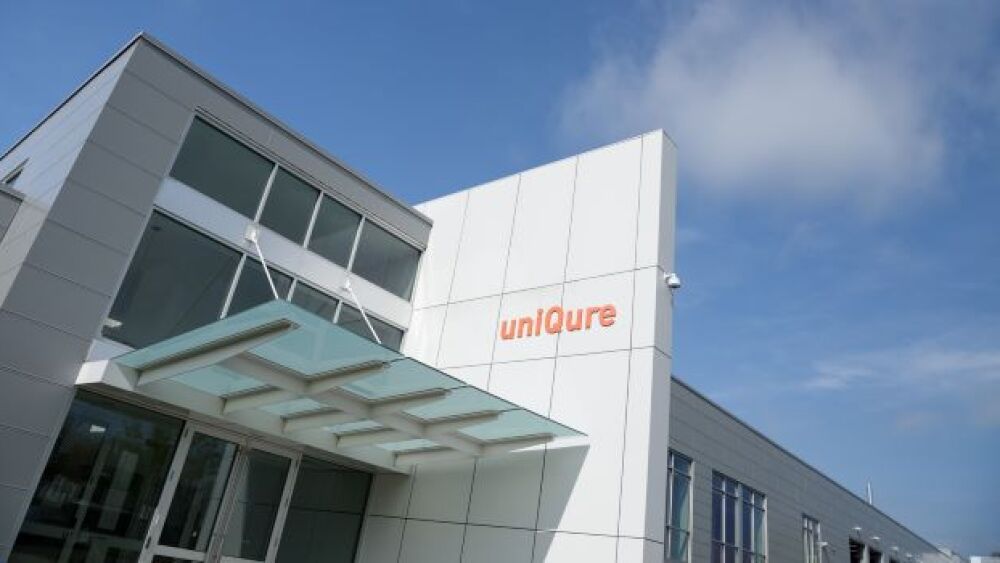The cancer conference overwhelms the senses and shows off the might of the pharmaceutical industry.
The American Society for Clinical Oncology’s Annual Meeting for 2025 is, if nothing else, absolutely overwhelming and omnipresent. If the meeting’s 2024 numbers are any guide, about 45,000 people will have attended. And pharma, unsurprisingly, has a massive presence.
Advertisements for data readouts were everywhere—Novartis had covered every column in the hotel next-door with huge posters for breast cancer and leukemia medicines Kisqali and Scemblix. A screen in the elevator announced ‘Pluvicto: New Indication. New Data.’
BeOne Medicines—formerly BeiGene—sponsored the slip of paper housing my room’s key card, which screamed ‘Tevimbra now approved in 2 new 1L indications’ and ‘Start strong with Brukinsa.’ Someone left bags full of literature on every door handle in the hotel hallway. It was hard to escape—when I left the meeting in the evening to see a friend in Chicago, Eli Lilly ads raced by on the L platforms and at bus stops.
It’s easy to abstractly look at a chart and see that biopharma is a big money business—an industry outputting north of $300 billion worldwide per annum and climbing every year—but this was seeing it and even physically feeling it. I felt it in the five miles I walked on day one of the conference without ever leaving the building, just to get to seminars, interviews and the bathroom. I felt it on my back when the only quiet spot I could find to have an editorial meeting with my BioSpace colleagues was on the floor in the corner of the Lakeside Lounge because every other flat surface had a cloud of people hovering around it. I felt it in the free latte I snagged from one of the dozen plus (I lost count) full-service pop-up coffee bars offered by all of the bigger companies. I walked past Johnson & Johnson’s purple-lit cafe, Bayer’s rolled ice cream bar and Delfi Diagnostics’ swag of choice: socks.
And just like the industry itself, the meeting is truly global. Chinese biotech companies in the exhibitor’s hall, French and Italian media in the press room, grad students from any university I could think to name. The cultural diversity was impressive. I saw a woman folding origami cranes in a quiet moment. I watched a man eat a bagel with a fork and knife. I saw awesome displays of technical dazzle—I really like big robotic pipetting and surgical arms—and some inadvisably weird and off-putting movies of computer-generated humans standing inside a glass cylinder talking about their cancer journeys.
Truthfully, it seemed at times like more of a carnival than a scientific meeting. Bright lights, throngs of people, attractions and souvenirs (like coffee and socks). It was a pure show of force for the pharmaceutical industry, a display of its ability to, yes, fight disease.
But the volumes of data shared put all that money in the pharma companies’ mouth, with announcements of major progress in hard-to-treat diseases like pediatric gliomas, head-and-neck cancers and small-cell lung cancer. I also learned how AstraZeneca is leveraging artificial intelligence to change the trajectory of cancers at every stage. And the uptick in pharma deals this week reflected excitement in the scientific progress being made.
It’s easy to become overwhelmed by the firehose of information that ASCO supports, but taking a step back gives much needed perspective. All of those tens of thousands of attendees have come together in the spirit of a shared, noble mission: ridding the world of cancer.









